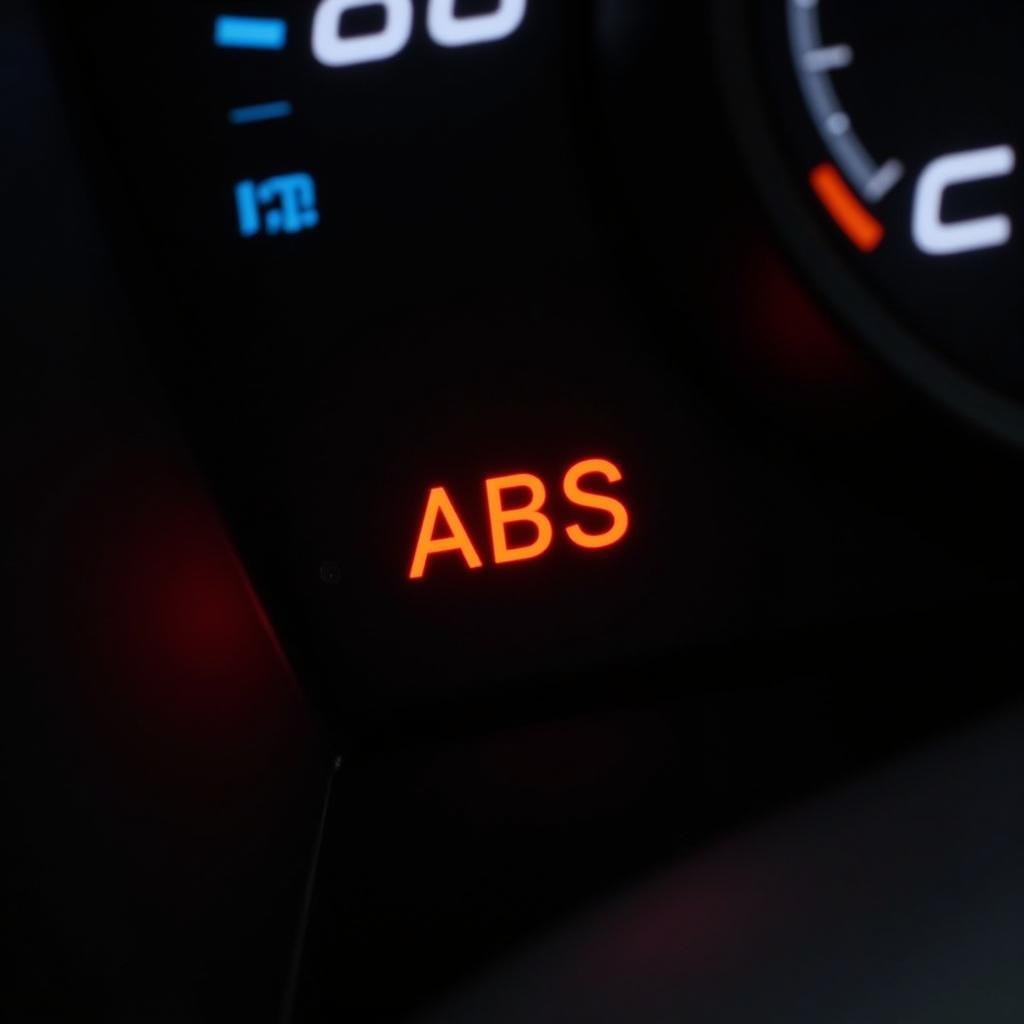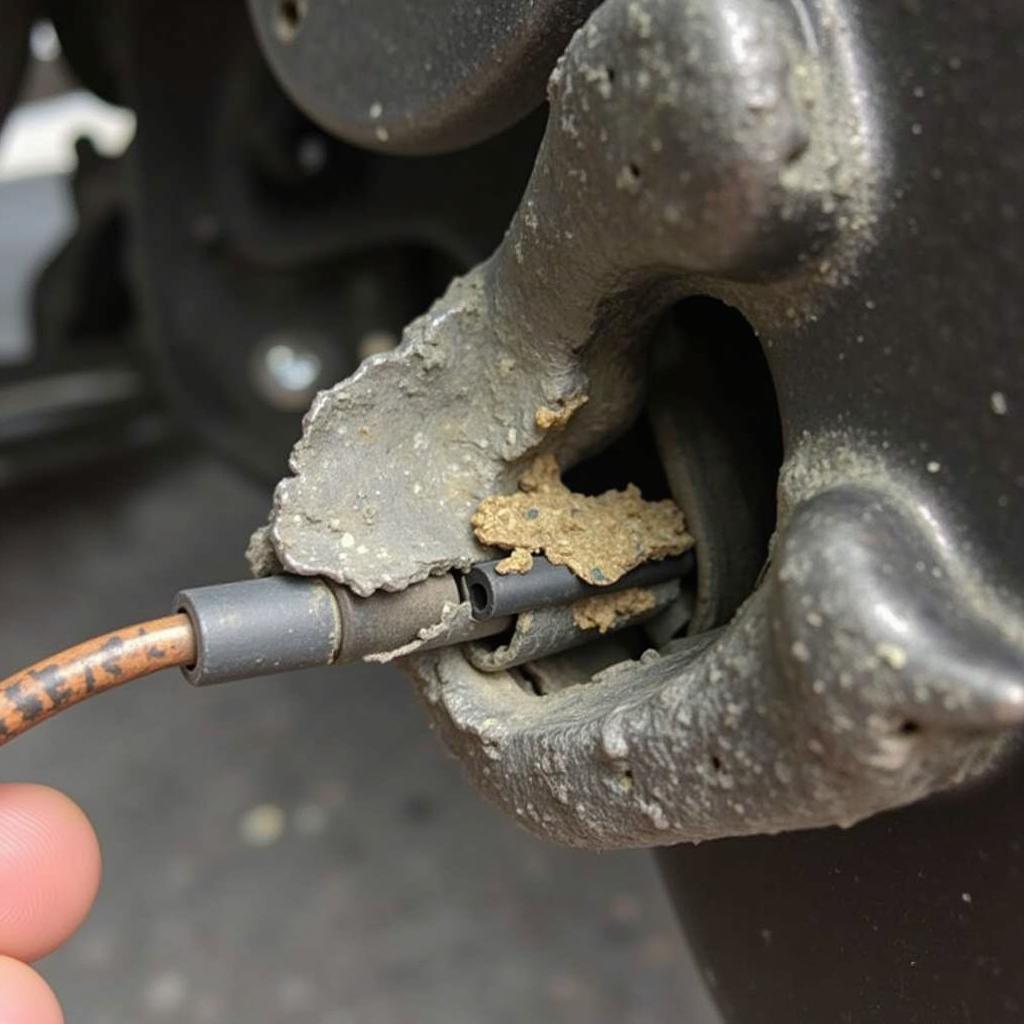If you’re driving your 2014 Subaru Legacy and the red brake warning light starts flashing, it’s a clear signal that something requires immediate attention. This warning light is connected to your car’s braking system, and ignoring it could compromise your safety and that of your passengers. Let’s delve into the common reasons behind this flashing red light and discuss what steps you can take to address the issue.
Potential Causes of a Flashing Red Brake Light
There are several reasons why your 2014 Subaru Legacy’s red brake warning light might be flashing. Here are some of the most common culprits:
1. Low Brake Fluid Level
One of the most common reasons for a flashing red brake light is low brake fluid. Your brake system relies on hydraulic pressure to function correctly, and brake fluid is the lifeblood of this system.
How to Check Your Brake Fluid:
- Locate the brake fluid reservoir under the hood. Refer to your owner’s manual for the exact location.
- Check the fluid level. The reservoir should have a “Min” and “Max” marking. Ideally, the fluid level should be closer to the “Max” line.
- Important: If the brake fluid level is low, do not continue driving. Low brake fluid can significantly impact your ability to brake safely.
2. Worn Brake Pads
Your brake pads are designed to wear down over time. When they become too thin, they can trigger the red brake warning light. This is often accompanied by a high-pitched squealing sound when braking.
How to Know if Your Brake Pads Need Replacement:
- Listen for noises: A squealing or grinding noise when you apply the brakes often indicates worn brake pads.
- Feel for vibrations: If you feel vibrations in the brake pedal or steering wheel when braking, it’s another sign your pads might be worn.
3. Faulty Brake Sensors
Modern cars, including the 2014 Subaru Legacy, are equipped with brake pad wear sensors. These sensors are designed to trigger the warning light when your brake pads wear down to a certain point. However, these sensors can sometimes malfunction, causing a false warning.
4. Issues with the ABS System
Your Subaru Legacy has an Anti-lock Braking System (ABS) designed to prevent wheel lockup during hard braking. If there’s a fault within the ABS system itself, it can trigger the warning light. In most cases, when the ABS system has an issue, a separate warning light will illuminate on the dashboard in addition to the brake warning light.
 ABS Warning Light
ABS Warning Light
What to Do When Your Brake Light is Flashing
- Pull over safely: If it is safe to do so, pull your car over to a safe location as soon as possible. Driving with a flashing brake warning light can be dangerous.
- Check the brake fluid: Carefully inspect the brake fluid level. If it’s low, adding brake fluid might temporarily resolve the issue, but you’ll need to have the system inspected for leaks.
- Don’t risk it: If you’re unsure about the cause or uncomfortable inspecting the brake system yourself, call a qualified mechanic or tow your car to a trusted repair shop.
Remote Diagnostics and Software Solutions for Brake Issues
In some cases, a flashing brake light might be linked to software or sensor glitches within your 2014 Subaru Legacy’s braking system. Advanced remote diagnostics and software solutions are becoming increasingly prevalent in the automotive industry.
How Remote Diagnostics Can Help:
- Pinpoint the issue: Remote diagnostics can quickly identify the root cause of the problem, saving you time and potentially unnecessary repairs.
- Software updates and calibrations: If the issue is software-related, a remote technician can often install updates or recalibrate sensors wirelessly.
Conclusion
A flashing red brake warning light in your 2014 Subaru Legacy should never be ignored. By understanding the potential causes and taking prompt action, you can ensure your safety and address the issue effectively. If you’re ever in doubt, seeking professional help from a qualified mechanic or utilizing remote diagnostics services is always the safest course of action.

